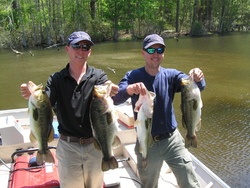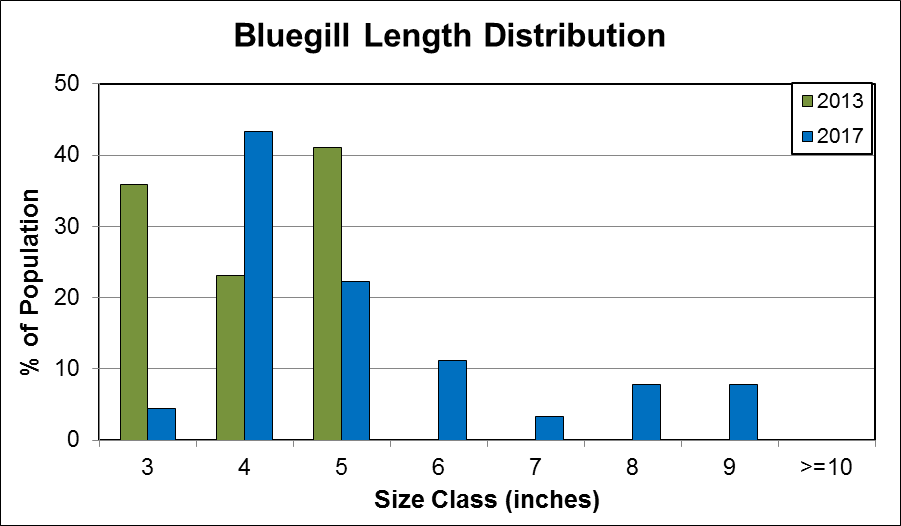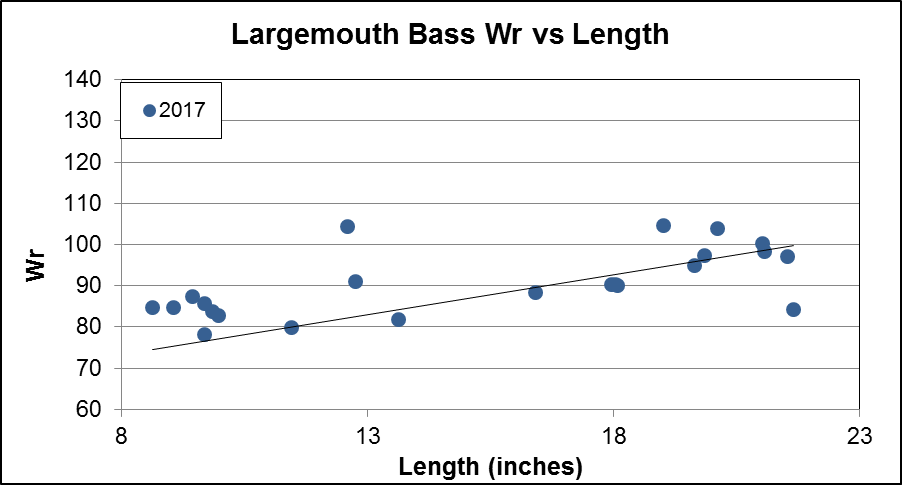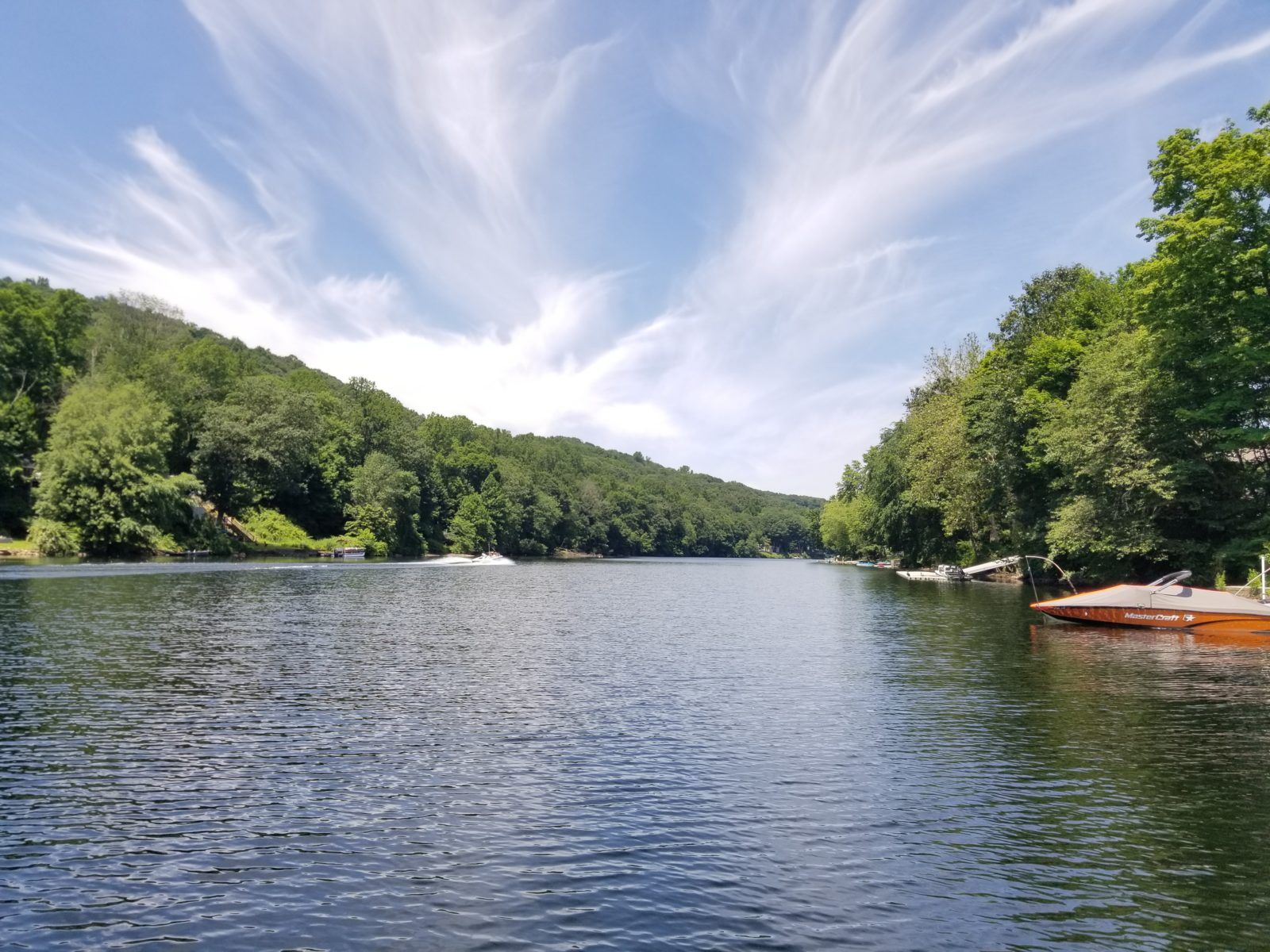Written by Industry Expert Aaron Cushing, Fisheries & Wildlife Biologist
 With so much instant gratification in life these days, it is becoming harder and harder for people to exercise patience. When it comes to fisheries management, however, patience often leads to great future rewards.
With so much instant gratification in life these days, it is becoming harder and harder for people to exercise patience. When it comes to fisheries management, however, patience often leads to great future rewards.
A pond owner in North Carolina decided to take the patient approach to establishing a trophy Largemouth Bass fishery in his 9.1-acre pond. The pond was reset by the owner in 2011 and stocked with a variety of forage fish such as fingerling Bluegill, Redear Sunfish and Golden Shiner, as well as two-inch Largemouth Bass. In the spring of 2013, the pond owner decided to reach out for professional guidance to better gauge if his fishery was on the right track. That spring, SOLitude electrofished the pond for the first time, collected water quality data, and designed a Fisheries Management Plan to help the pond owner meet his long-term goals.
Electrofishing is a sampling technique conducted by fisheries biologists. Using a specialized boat that produces an electrical field, professionals can temporarily stun and collect fish to gather population data and remove undesired species. SOLitude’s initial electrofishing sample reflected the narrow size-class structure of mostly 12-15-inch Largemouth Bass from their stocking two years prior, with an average Relative Weight (Wr) of 90. Unfortunately, not all of the Black Crappie were eliminated during the owner’s reset and their population remained well established. Additionally, the sunfish population of Bluegill and Pumpkinseed was comprised of mostly three- to five-inch fish, and based on the goals for the pond, the overall forage base was poor. There were plenty of tree stumps, but dense fish cover and spawning areas were also lacking, and water test results revealed very low alkalinity.
SOLitude recommended additional forage stocking, including adult Bluegill and Redear Sunfish, and annual stocking of Golden Shiners. Several fish feeders were recommended and installed to improve and support the forage base. The owner also took the time to improve dense cover and create his own Bluegill spawning beds. Following annual spring electrofishing, harvest and stocking recommendations were modified as needed, but always included harvesting all Black Crappie and removing slot-sized Largemouth Bass.

Figure 1
Over the years, this hands-on pond owner completed many of our professional recommendations with sweat equity, and with the help of SOLitude’s high-tech equipment and experience. The results are promising. The spring 2017 electrofishing results indicated that the originally-stocked Largemouth Bass continued to grow in length and reproduce well (Figure 1). More than 20 percent of all bass sampled were over 20 inches, with a large percentage of the pond’s bass population reaching nine inches in length. The Bluegill population also grew in length with 30 percent now over six inches in length (Figure 2).
 Figure 2
Figure 2
Even though the Largemouth Bass continue to grow in length every year, there is still much to do to improve the fishery. The Largemouth Bass and Bluegill collected during the spring 2017 electrofishing project were healthy, but their relative weights were low in comparison to the goals for the pond. The Largemouth Bass collected in 2017 had a Wr average of 90, far from the springtime goal of 110. Relative weight was positively related to Largemouth Bass length, indicating that younger/smaller fish are in poorer condition. This could be due to competition with Black Crappie, too many Largemouth Bass in that size range, or both. Based on water quality data, as well as field observations of the fishery, the forage fish production is being limited as a result of poor productivity. The Black Crappie are disrupting the recruitment success of the Bluegill and other forage fish species, and as a result, the forage base is out of balance, which is having a negative impact on the bass growth.

Figure 3
To counteract the subpar productivity identified this past spring, lime will be added to the pond this fall. This will help boost its alkalinity, and thus its productivity, allowing the pond to naturally create a plankton bloom that supports the food chain from the bottom up. In addition to increasing primary productivity, Golden Shiners were stocked to help boost the forage base, and pelleted fish feed was introduced at a more aggressive rate than what was fed historically. As always, following annual spring electrofishing, the management strategies for the pond are being modified with the long-term goals of the fishery in mind.

Figure 4
Reaching the goal of a trophy fishery is a moving target, which is why it is crucial to utilize a variety of tools, including electrofishing, supplemental feeding, habitat management and more. This North Carolina pond has much potential, and with continued patience and dedicated management it is possible to meet and exceed the goals of the property owner.
Contact the experts at 888-480-5253 for all of your lake, pond, wetland and fisheries management needs.
 Aaron Cushing is an environmental scientist and fisheries and wildlife biologist at SOLitude. He assists with the coordination of SOLitude’s fisheries management programs and has a professional interest in water quality restoration projects, trophy fisheries monitoring and the development of comprehensive management plans that focus on long-term, ecologically responsible solutions.
Aaron Cushing is an environmental scientist and fisheries and wildlife biologist at SOLitude. He assists with the coordination of SOLitude’s fisheries management programs and has a professional interest in water quality restoration projects, trophy fisheries monitoring and the development of comprehensive management plans that focus on long-term, ecologically responsible solutions.
SOLitude Lake Management is committed to providing full service lake and pond management solutions that improve water quality, preserve natural resources, and reduce our environmental footprint. Our services include lake, pond and fisheries management programs, algae and aquatic weed control, mechanical harvesting, hydro-raking, installation and maintenance of fountains and aeration systems, water quality testing and restoration, bathymetry, lake vegetation studies, biological assessments, habitat assessments, invasive species management and nuisance wildlife management. Services, consulting and aquatic products are available to clients nationwide, including homeowners associations, multi-family and apartment communities, golf courses, commercial developments, ranches, private landowners, reservoirs, recreational and public lakes, municipalities, parks, and state and federal agencies. Learn more about SOLitude Lake Management and purchase products at www.solitudelakemanagement.com.










